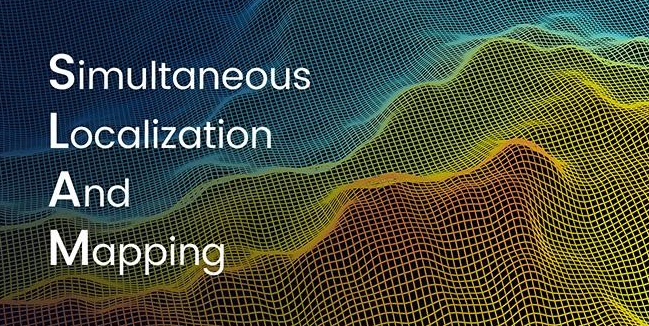
Home
Home
About Geosun
About Geosun
Products
Products
- Hardware
- Mobile LiDAR Scanning System
- gCollector Road Information Collection System
- gSpin POS System
- PPK Solution
Support
Support
News
News
Contact Us
Contact Us

In the evolving world of surveying and mapping, SLAM (Simultaneous Localization and Mapping) has emerged as a groundbreaking technology. By enabling real-time mapping and localization, SLAM simplifies data collection and enhances the efficiency of surveying tasks. This guide delves into SLAM's core functionalities, its advantages over traditional methods, and its applications across various fields.

SLAM stands for Simultaneous Localization and Mapping. It is a sophisticated process that computes the position of a device or robot while concurrently building a map of the environment. This technology is essential for mobile mapping, as it allows surveyors to create detailed maps of previously unexplored or complex environments in real-time.
SLAM addresses two primary challenges:
Localization: Determining the precise location of the device.
Mapping: Constructing an accurate representation of the environment.
Traditionally, mapping requires a map to estimate location, while accurate positioning is needed to create a map. SLAM resolves this paradox by employing a combination of sensors and algorithms. SLAM devices use visual data or other non-visible data sources, alongside inertial measurement units, to generate an initial positional estimate and a preliminary map. As the device moves, it continuously updates its position and refines the map, creating a detailed and accurate representation of the environment.
SLAM offers numerous benefits for surveying and mapping, including:
1. No GPS Requirement: SLAM does not rely on GPS signals, making it invaluable in GPS-denied environments such as underground mines, urban canyons with tall buildings, and dense forests where GPS signals can be obstructed or unreliable.
2. Mobility: SLAM systems are mobile, allowing for on-the-go mapping. This eliminates the need for time-consuming setup and repositioning of traditional equipment like total stations. SLAM enables data capture while moving, whether on foot, by vehicle, or from the sky using drones. This capability significantly accelerates survey times and reduces costs.
3. Versatility: SLAM technology is versatile and available in various formats, accommodating different survey needs. It can be used both indoors and outdoors, and in a wide range of environments.
SLAM comes in various forms, with Visual SLAM and LiDAR SLAM being two prominent types. Each has unique characteristics and is suited to different applications.
Visual SLAM: Visual SLAM relies on images captured from cameras or visual sensors. It uses these visual inputs to map the environment and determine the device's location. By tracking points of interest in the camera’s field of view, Visual SLAM triangulates the 3D position and constructs a 3D map. This method is particularly useful for applications requiring visual context, such as augmented reality (AR) and autonomous robots.
LiDAR SLAM: LiDAR SLAM employs laser sensors to map the environment. LiDAR (Light Detection and Ranging) sends out laser pulses and measures the time it takes for the reflections to return. This data provides precise distance measurements, resulting in high-resolution 2D or 3D point clouds. LiDAR SLAM is renowned for its accuracy and speed, making it ideal for creating detailed maps in various conditions, including underground environments and large-scale outdoor areas.
Both Visual and LiDAR SLAM technologies have their strengths:
LiDAR SLAM excels in creating highly accurate 3D maps and is effective in low-light or complex environments. It is suitable for applications such as underground mining, construction site documentation, and aerial surveys.
Visual SLAM is advantageous for applications where visual data is crucial, such as AR or unmanned aerial vehicles (UAVs). It is generally less expensive and more compact than LiDAR systems.
SLAM's flexibility makes it applicable across various fields:
1. Mining and Quarries: SLAM provides high-accuracy mapping of underground mines and quarries. It helps in detailing inventory, monitoring excavation progress, and ensuring safety.
2. Surveying and Real Estate: SLAM is used for fast scanning to create comprehensive inventories, floor plans, and digital terrain models (DTMs). It facilitates rapid and accurate documentation of properties.
3. Facilities and Asset Management: SLAM assists in condition reporting, modeling, and asset identification. It helps facility managers keep track of asset conditions and perform maintenance efficiently.
4. Architecture, Engineering, and Construction (AEC): SLAM supports Building Information Modeling (BIM), construction site progress monitoring, and documentation of as-built conditions. It aids in accurate modeling and project planning.
5. Conservation: In forestry and historical building preservation, SLAM is used for inventory management, condition assessments, and conservation planning.
6. Security, Public Safety, and Forensics: SLAM enhances emergency response, forensic investigations, and accident reconstruction. It provides detailed layouts of buildings, reducing response times and improving safety for first responders.
SLAM is a transformative technology for surveying and mapping. Its ability to provide real-time, accurate, and detailed maps without relying on GPS makes it an invaluable tool across various applications. Whether for construction, real estate, mining, or conservation, SLAM offers significant advantages in speed, efficiency, and versatility, revolutionizing how we collect and use spatial data.
URL:https://www.geosuntech.com/News/237.html
Previous:How to Choose the Right Handheld 3D LiDAR Scanner
Next:Using Handheld SLAM LiDAR in BIM: Boosting Construction Efficiency and Accuracy




